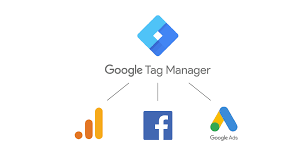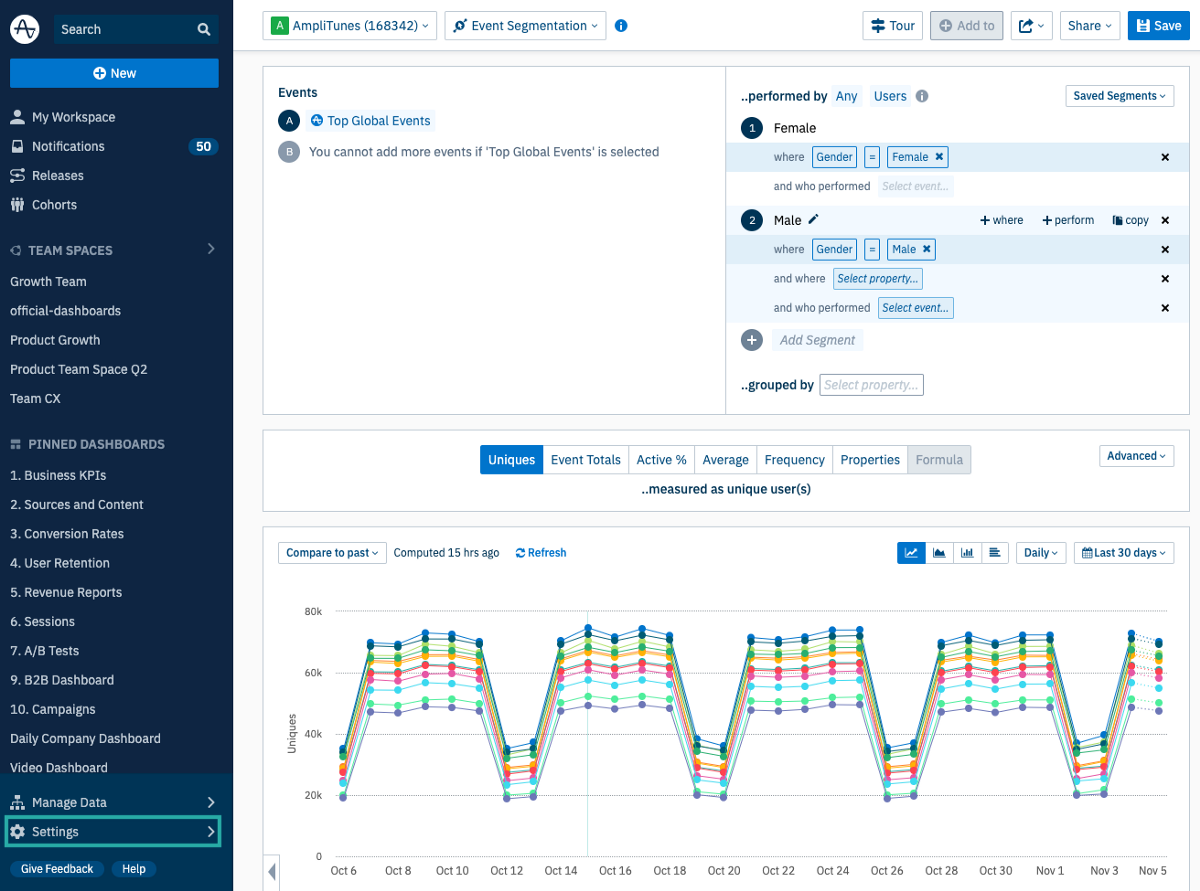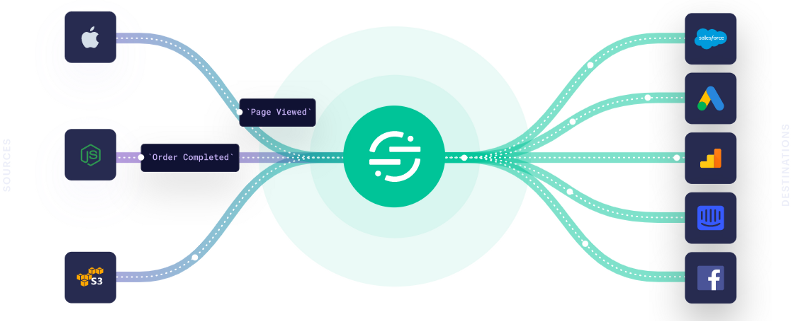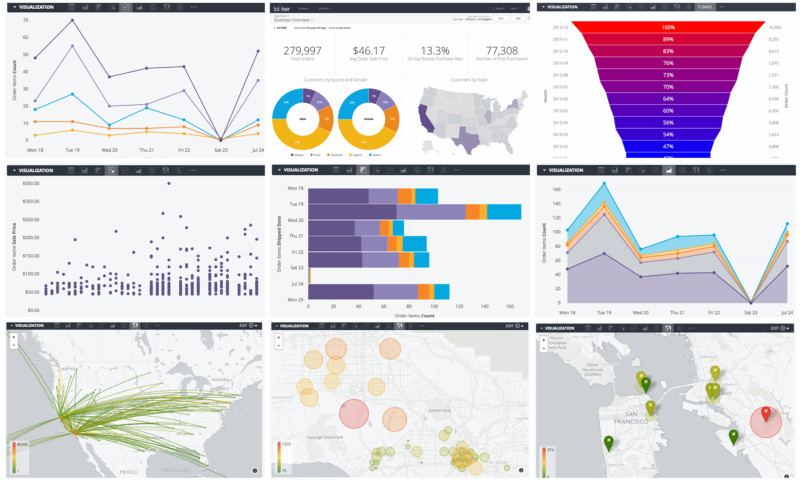The ultimate analytics stack for marketplaces
At Off The Record, we’ve seen many startups and scaleups doing analytics wrong: either too late or not at all. Marketplaces can be severely affected by this.
A) They have a complex two-sided acquisition model;
B) Performance marketing is a vital growth strategy that comes with attribution and tracking challenges; and
C) They’re often dependent on seasonality, so consistent data is beyond crucial.
It’s hard to fix an analytics stack that is broken after a while, which is why we wrote this article.
Complete your toolbox
In this section, we go through the different types of analytics tools needed to track & measure web-based marketplaces.
Here, we’ll cover:
- Complete your toolbox • What types of tools (tag managers, attribution, event tracking, amongst others) do you need in order to get a full picture of how your web-based marketplace is performing. We also recommend individual tools that would fit either startups and scaleups.
- Best in class • What tools are some of the most successful marketplaces in the world, like Shopify and Airbnb, currently using.
1. Advertising tags
Examples of tools: Facebook Custom Audience, Campaign Manager Floodlights, Adobe Audience Manager, Quantcast, Bing ads
Lenny Rachitsky, former Growth PM at Airbnb, interviewed some of the most successful marketplaces in the Bay Area on how they scaled. 70% of them (including Airbnb themselves, Instacart, Uber and Lyft) said performance marketing was a vital growth channel for them.
Dynamic creatives, retargeting, Google Shopping Ads, LinkedIn campaigns, and Instagram ads are some of the most effective strategies for generating marketplace sales. In order to get the best of those platforms, you need to build audiences (both lookalikes and retargeting). And in order to do that, you need to include all their individual (Google Floodlights, Facebook pixel) tags in your analytics stack.

Another big advantage of having those individual tags in your stack is you get to use the “Google Brain” and “Facebook Brain”. By giving conversions to your advertising platforms, advertisers can use that data to better target your ads to those most likely to convert.
It’s less important to use these advertising tags to measure performance. The more you advertise, the bigger the overlap will be between the audiences you reach with each advertising platform. You need to avoid counting duplicated conversions, so it’s safer to rely on one tool to attribute conversions to campaigns. (We’ll see more on that when we cover “attribution and event tracking”.)
Although advertising tags are the only tags that provide post-view conversions, those are falling in disuse. The rise of adblockers, Safari’s privacy-first policies and the upcoming Google Chrome’s 3rd party cookie ban means that post-click is the future.
Off The Record recommends:
For everyone: We don’t recommend any advertising tags in specific, as they’re dependent on what acquisition sources work for your business. Our only advice on the topic is: it’s never too early to install advertising tags to start building audiences.
2. Tag management system (TMS)
Examples of tools: Launch (Adobe), Tealium, Google Tag Manager

We’ve seen above that:
- 70% of marketplaces’ vital growth comes from performance campaigns;
- You need to install a lot of tags to effectively run performance campaigns.
That brings us to another critical piece in your marketplace analytics stack: a tag management system (TMS).
A TMS centralises all your tags in one place; “born out of the increasing need for more agile marketing”. What does that mean in practice?
- One tag in the code: You only need to install one tag on your code: the TMS’. Additional tags, like Facebook’s and Google’s, are installed in the TMS. They will fire on your website from within the TMS’ tag.
- New tags by the marketing department: The installation of tags in the TMS instead of directly on the code gives freedom to the marketing department to implement tags without depending on engineers. This freedom can be used to experiment with new audiences or new advertising platforms.
- Consistent triggers: Tags will fire dependent on triggers that are defined straight in the TMS. E.g. In your TMS, you could have a trigger for a successful landing on a post-purchase “Thank You” page that also passes a variable of “Shopping cart value”. You can use the same trigger and value to fire all your advertising tags. This brings data governance to how you measure conversions.
Therefore, we can say that there are two big (very big!) advantages of using a TMS because it’s enabling your marketing department to execute in small teams and ensuring data is consistent and trustworthy across all platforms.
Off The Record recommends
For everyone: Not installing a TMS for a marketplace product is a mistake you’ll regret: it will restrict how your marketing department experiments and often lead to inconsistencies in the way conversions are tracked. Don’t say we didn’t warn you.
For scaleups: Tealium is the most robust solution (used by Shopify) and it also works as a Customer Data Platform.
For startups: For 90% of the cases, Google Tag Manager (a free tool) does the work.
3. Attribution and event tracking
Examples of tools: Google Analytics, Google Analytics 360, Mixpanel, Kissmetrics, Amplitude, Heap Analytics
When we covered advertising tags, we saw that only advertising platforms were able to track and attribute post-view conversions. However, in order to get a full picture of how campaigns — both organic and paid — perform, we need to centralise conversions in one tool to avoid overlap and duplication. That is the role of an attribution tool.
For web-based businesses, attribution is a fairly simple business, since you have both referrer URLs and UTMs in your hands. All event-tracking product analytics tools offer a way to visualise conversions per source (even the really simple ones).
Marketplaces often run complex marketing campaigns — with the same user being served prospecting, retargeting and reengagement campaigns across search, social and display. Therefore, it’s important to review your attribution model to stay away from last-touch only; unless you want all your budget to go to paid search quarter after quarter. All our example tools allow you to customise your attribution model.
This chosen tool should serve both the role of attribution and event tracking. Marketplaces have two concurrent funnels, which makes it extra important that you track thoroughly. Spend time working on a naming convention/taxonomy that will allow you to easily segment users dependent on their stage funnel (supply or demand). What you track and how you name it will likely have a bigger impact than which tool you use for your analytics stack.

Let’s assume you’re in charge of setting up event tracking for eBay. Below we can see a selection of events that will allow you to understand how people are selling and buying “shoe storages”.
Supply Funnel | Goal: Publish an item for sale
- Event: Land on ebay.co.uk
- Event: Click on /sell
- Event: Typed in product name | Label: “shoe storage”
- Event: Selected similar product | Label: “{unique product ID}_{product condition}”
- Event: Account created | Label: “{unique user ID}”
- Event: Publish an item | Label: “{unique product ID}”
Demand Funnel | Goal: Purchase a product
- Event: Land on ebay.co.uk
- Event: Searched item | Label: “shoe storage”
- Event: Viewed item | Label: “{unique product ID}”
- Event: Added item to basket | Label: “{unique product ID}”
- Event: Checkout | Label: “{order ID}”
Above, you can see that we avoid passing strings/product names. By using IDs (user IDs, product IDs), we know we can always join this data with our database to get more information on the user or on the purchase.
Choosing a tool that you can see your company using for the next couple of years is an important factor to consider here. Make sure to review their pricing models based on where you expect your growth to go. Even though events can be fairly fast to implement (especially with a tag management system), remember it takes time for data to be populated. A lot of marketplaces are heavily impacted by seasonality, which makes the role of consistent data throughout the years pivotal.
Off The Record recommends
For scaleups: With queriable event-log data at your fingertips through BigQuery, Google Analytics 360 is the most robust and complete tool you could choose. It is also most likely the priciest.
For startups: Both Mixpanel and Kissmetrics are entry-level tools that come with some handy features like customer profiles and funnel/cohorts visualisations. However, their querying limitations mean you’ll probably want to switch when you scale. Amplitude has SQL access for custom analysis as well as a simple UI, making it the best option for startups.
4. Customer Data Platform (CDP)
Examples of tools: Tealium, Segment, Exponea

A customer data platform (CDP) pulls customer data from multiple sources, unifies and cleans it. Once that data is centralised, you can pump your data into external destinations too, for example, build dashboards.
You don’t always need a CDP. If you rely on multiple conversion sources (sales, CRM, advertising) and, because of that, you have a tool overload, a CDP can save you a lot of time (and errors).
Let’s use an example: Catawiki, the online auction marketplace for special objects. Because they sell high-value products that are difficult to find (we’ll use the example of “rare stamps”), it would make sense for them to:
- Invest heavily in microtargeting through performance marketing (both search and social) to reach the right users; as well as direct buying inventory of blogs/websites focused on stamps.
- Have a sales team, focused on finding individual sellers or small shops that are not exploring e-commerce yet.
- Explore ways to convert buyers into sellers; with targeted CRM campaigns focused on education.
With those three types of supply acquisition strategies, we can already picture a hypothetical Catawiki marketing set-up with tools like Campaign Manager, Display & Video 360, Hubspot, Marketo, Intercom and more. If all of those tools are not unified, you’ll likely encounter discrepancy on your data which can have a big impact on how decisions are made.
We’ve seen previously that it’s important to centralise all your conversion data in your attribution tool. Otherwise, you’re depending on how each advertising platform tracks which will lead to a discrepancy on how conversions are measured and even duplication. When you have various sources tracking and storing customer data, unifying and centralising has the same benefit: data consistency.
Off The Record recommends
For startups: Segment has invested heavily in integrations and documentation, which makes it a great tool to get started with it. They’re also self-serve, so you can get started without going through sales. Ask them (or us) about startup packages with a discount.
For scaleups: Tealium is a powerful enterprise solution and it’s the preferred choice of bigger companies. They also offer a TMS in the product.
5. Data Visualisation and dashboarding
Examples: Looker, Tableau, Google Data Studio, Datorama
A data visualisation tool is where employees in your organisation can visualise results of all campaigns through dashboards, charts and tables. This tool should allow them to filter and slice the data (by date, goal, campaign, market, strategy, etc ) in any way they need in order to make decisions.

You want most employees in your organisation to only use the data from the dashboarding tool. Which is easier said than done. Often, employees will navigate to the data from their execution tool. For example, a campaign manager is more likely to analyse their campaigns based on the data they see on Facebook Ads than the data from Tableau. But if that happens, departments will be working with different sets of data and there will be a discrepancy on how results are analysed.
When choosing a visualisation tool and building dashboards, the most important thing is to understand your employees’ and team members’ needs. How data literate are they? What metrics do they need for their work and how should they be delivered for efficiency?
Off The Record recommends
For everyone: It depends a lot. It depends on your team (what skills do you have available), on how complex your acquisition is and on what tools you’re already using. Datorama comes with a robust list of built-in connectors, which makes it easy to pull data in. But, that could not be needed if you’re already using a CMP like Segment.
If you’ve chosen to go with Google Analytics for attribution + event tracking, using the also free Google Data Studio is an easy way to get started. Tableau and, most recently, Looker, are the robust options for those relying on heavy and complex data sets.
Conclusion
As we’ve seen, marketplaces two-sided acquisition models can make tracking, attributing and analysing tricky. However, with the right tools and set-up, you can gather the data you need to make decisions. Even the biggest ones don’t have a waterproof setup as far as we can tell from the outside, but you can come very, very close.
We wrote this article after seeing many marketplace startups doing analytics wrong: either too late or not at all. At Off The Record, we kickstart traction for startups, guide scale-ups into maturity and innovate together with corporate ventures. We’re a Techcrunch-recommended growth bureau that has helped most of the successful Dutch marketplaces scale.
Full disclosure: We are an official partner of Segment, Amplitude & HubSpot but we advise you to do your own research before choosing any tool whatsoever.
